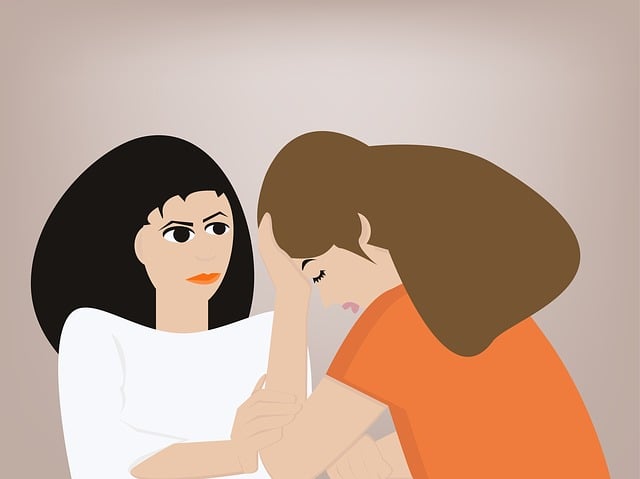Public awareness campaigns play a pivotal role in mental health education, empowering individuals to understand and address issues like therapy for phobias. By utilizing diverse media and tailoring messages to specific audiences (considering age, gender, culture), these campaigns dispel myths, reduce stigma, and encourage open conversations. Creative storytelling and community outreach further enhance their impact. Professionals must prioritize risk assessment and cultural sensitivity in therapy delivery, while measuring campaign success through multi-faceted metrics like symptom tracking, knowledge retention, and behavioral changes, to ensure effective and impactful public awareness efforts for therapy for phobias.
Public awareness campaigns play a pivotal role in educating and empowering communities, addressing diverse issues from health to environmental concerns. This article delves into the intricate process of developing effective campaigns, focusing on key strategies such as understanding target audiences, employing creative engagement tactics, and overcoming resistance. We explore specific methods, highlighting the importance of measurable outcomes, especially in therapy for phobias initiatives, where success is gauged by significant behavioral changes.
- Understanding Public Awareness Campaigns: Their Role in Education and Empowerment
- Identifying Target Audiences: Tailoring Messages for Maximum Impact
- Creative Strategies for Engaging and Overcoming Resistance
- Measuring Success: Evaluating the Effectiveness of Therapy for Phobias Campaigns
Understanding Public Awareness Campaigns: Their Role in Education and Empowerment

Public awareness campaigns play a pivotal role in educating and empowering individuals on various aspects of mental health. These initiatives are designed to dispel myths, reduce stigma, and encourage open conversations about issues that often remain hidden or misunderstood. By leveraging different media platforms, these campaigns can reach a wide audience, offering insights into the complexities of mental well-being. One such critical area is the therapy for phobias, which has seen significant advancements in recent years.
Beyond raising awareness, these campaigns also equip people with stress reduction methods and promote self-care practices. In light of the growing importance of mental health, professionals must engage in risk assessment to ensure safe and effective interventions. Additionally, continuous Mental Illness Stigma Reduction Efforts are necessary to foster an inclusive society that supports individuals grappling with various forms of mental illness.
Identifying Target Audiences: Tailoring Messages for Maximum Impact

Identifying target audiences is a pivotal step in designing effective public awareness campaigns. By understanding demographic and psychographic factors, campaign creators can tailor their messages for maximum impact. Different age groups, genders, cultural backgrounds, and individuals dealing with specific issues like phobias have unique needs and communication preferences. For instance, therapy for phobias might require distinct approaches when targeting young adults compared to seniors or those from diverse cultural sensitivities.
This audience segmentation allows for the creation of personalized content that resonates with each group. Incorporating resilience-building strategies in mental healthcare awareness can engage individuals facing challenges, while emphasizing cultural sensitivity ensures inclusivity and trust. Crisis intervention guidance, another essential aspect, can be adapted to meet the immediate needs of diverse audiences, fostering a sense of support and accessibility within the campaign.
Creative Strategies for Engaging and Overcoming Resistance

In crafting public awareness campaigns, especially those aimed at sensitive topics like therapy for phobias, creative strategies are key to engaging audiences and overcoming resistance. One effective approach is storytelling, which humanizes complex mental health issues. By sharing personal narratives through various media, such as a Mental Wellness Podcast Series Production, individuals with phobias can become relatable characters, fostering empathy among listeners. This strategy not only breaks down stigma but also encourages open dialogue about seeking treatment.
Community Outreach Program Implementation is another powerful tool. Engaging local communities directly allows for tailored messaging that resonates with cultural and personal contexts. By involving community leaders and leveraging social media platforms, these programs can reach a wide audience, dispel myths, and promote the benefits of therapy for phobias. Additionally, Risk Management Planning for Mental Health Professionals is essential to ensure safe and effective service delivery, further building trust in these initiatives.
Measuring Success: Evaluating the Effectiveness of Therapy for Phobias Campaigns

Measuring success is a pivotal aspect of public awareness campaigns development, especially when addressing complex issues like phobias. Evaluating the effectiveness of therapy for phobias campaigns requires a multi-faceted approach. One key metric is tracking changes in participants’ self-reported symptoms before and after engagement with the campaign. This can involve standardized questionnaires designed to assess specific phobia-related anxieties. Additionally, qualitative feedback through surveys or interviews provides insights into individuals’ perceived shifts in coping skills development and stress management.
Public awareness campaigns that effectively dispel myths and provide accurate information about therapy for phobias stand a better chance of success. By measuring knowledge retention and changes in attitudes towards seeking help, organizers can gauge the campaign’s impact on public understanding. Furthermore, monitoring long-term behavioral changes, such as increased usage of counseling services or participation in support groups, offers robust evidence of campaign effectiveness. This holistic evaluation approach ensures that efforts to raise awareness and encourage therapy for phobias are indeed making a tangible difference in individuals’ lives.
Public awareness campaigns play a pivotal role in educating and empowering communities. By identifying target audiences and employing creative strategies, these initiatives can effectively address various issues, including therapy for phobias. Measuring success through evaluation ensures the impact of these campaigns is tangible, allowing for continuous improvement and enhanced public understanding. This holistic approach empowers individuals to make informed decisions and fosters a more engaged, resilient society.














